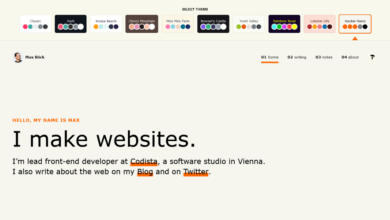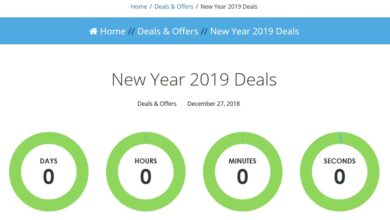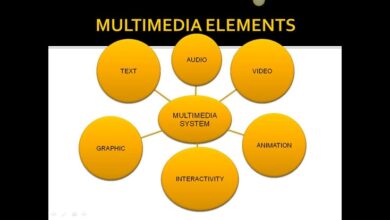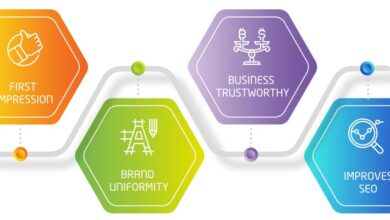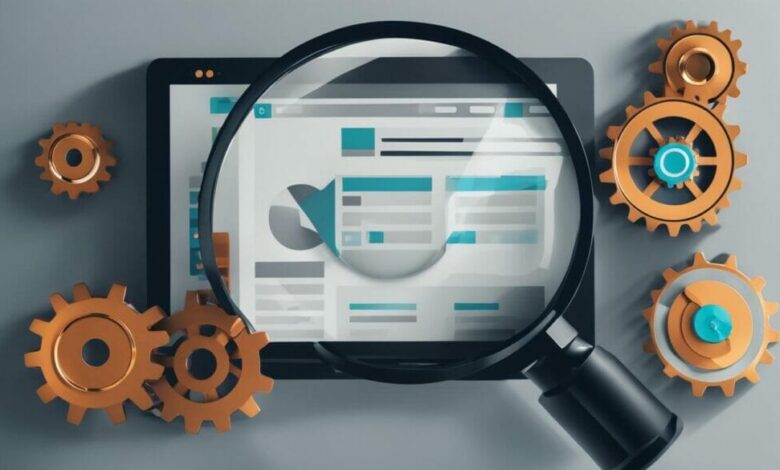
How Can Great Website Design Improve Conversion Rates?
How can great website design improve conversion rates? That’s the million-dollar question for any business with an online presence! A well-designed website isn’t just a pretty face; it’s a finely tuned conversion machine, subtly guiding visitors towards desired actions. From intuitive navigation to compelling visuals and persuasive copy, every element plays a crucial role in boosting your bottom line.
Let’s dive into the specifics and uncover how to transform your website into a lead-generating powerhouse.
We’ll explore how user experience (UX) factors like navigation and clear calls to action (CTAs) directly impact engagement. We’ll also examine the power of visual design – the psychology of color, the impact of high-quality imagery, and the subtle art of typography. Beyond the aesthetics, we’ll discuss the importance of compelling website copy, leveraging testimonials, and utilizing A/B testing to optimize your content for maximum impact.
Finally, we’ll touch upon the technical aspects, ensuring your website is secure, accessible, and performs flawlessly. Get ready to unlock the secrets to a high-converting website!
User Experience (UX) and Conversion Rates
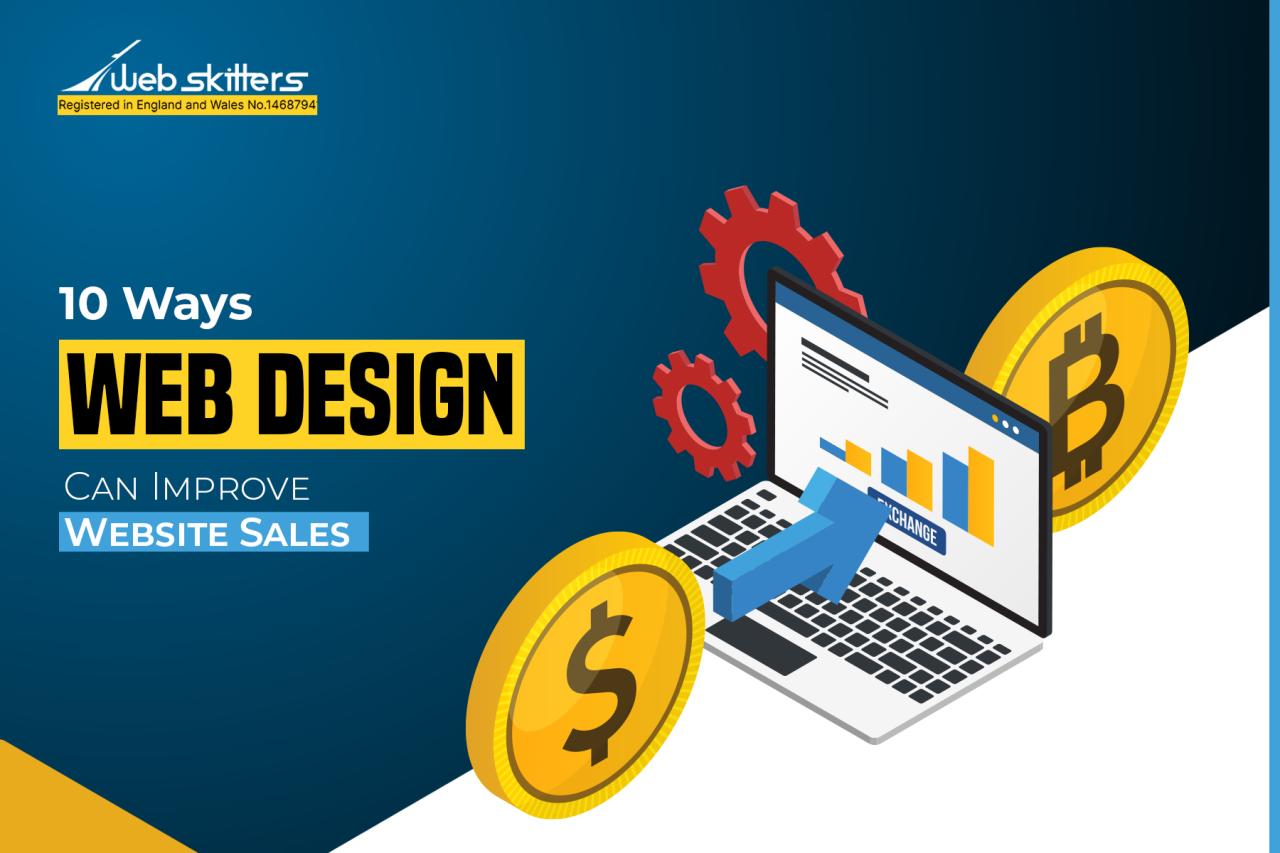
Source: webskitters.uk
A website’s success hinges on its ability to guide users seamlessly towards desired actions, ultimately driving conversions. A positive user experience (UX) is the cornerstone of achieving high conversion rates. Intuitive design, clear messaging, and fast loading times all contribute to a user’s overall satisfaction and likelihood of completing a desired action, whether that’s making a purchase, signing up for a newsletter, or filling out a contact form.
Let’s delve into the specific aspects of UX that significantly impact conversions.
Intuitive Navigation and User Engagement
Intuitive navigation is crucial for keeping users engaged and preventing them from bouncing. A website with a confusing or cluttered layout will frustrate users, leading them to abandon their task and leave the site. Effective navigation involves a clear sitemap, logical menu structures, and prominent search functionalities. Users should be able to easily find what they’re looking for without feeling lost or overwhelmed.
For example, a well-organized e-commerce site will categorize products logically, making it easy for customers to browse and find specific items. Conversely, a poorly structured site with buried navigation links will result in frustrated users and a higher bounce rate. A well-designed navigation system directly correlates with increased user engagement and time spent on the site, leading to higher conversion rates.
Clear Calls to Action (CTAs) and Conversion Rate Improvement
Calls to action (CTAs) are the prompts that guide users towards completing a desired action. Clear and compelling CTAs are essential for driving conversions. Effective CTAs are concise, visually prominent, and use action-oriented language. Instead of a vague “Learn More,” a stronger CTA might be “Get Your Free Trial Now!” or “Shop Our Sale.” The design of the CTA button itself is also important; using contrasting colors, clear text, and a visually appealing design can significantly increase click-through rates.
For instance, a bright green “Add to Cart” button on a predominantly white product page will be far more effective than a small, muted gray button. Effective CTA placement is also crucial; placing them strategically throughout the website, particularly at the end of key sections or pages, will maximize their impact.
Website Speed and User Experience
Website speed plays a critical role in user experience and conversion rates. Slow loading times lead to frustration, increased bounce rates, and ultimately, lost conversions. Users expect websites to load quickly, and anything slower than a few seconds can lead to a negative experience. Conversely, a fast-loading website creates a positive first impression and encourages users to stay and explore.
Here’s a table illustrating the relationship between loading times and key metrics:
| Loading Time (seconds) | Bounce Rate (%) | Conversion Rate (%) | User Feedback |
|---|---|---|---|
| <2 | 10 | 25 | Positive; site is fast and easy to use. |
| 2-5 | 20 | 15 | Mixed; some users find it slow, others don’t mind. |
| >5 | 40 | 5 | Negative; site is too slow and frustrating to use. |
Note: These figures are illustrative examples and can vary greatly depending on the specific website, industry, and target audience.
Mobile Responsiveness and Conversion Optimization, How can great website design improve conversion rates
With the increasing use of mobile devices, mobile responsiveness is no longer a luxury but a necessity for any website aiming for high conversion rates. A website that isn’t optimized for mobile devices will likely frustrate users and lead to a high bounce rate. Mobile-friendly design features that boost conversions include:* Intuitive touch navigation: Easy-to-tap buttons and menus that are optimized for finger interaction.
Responsive layouts
Content that adapts seamlessly to different screen sizes and orientations.
Fast loading speeds
Optimized images and code to ensure quick loading on mobile devices.
Simplified forms
Shorter forms with minimal fields to improve mobile usability.
Clear and concise content
Avoid overwhelming users with large blocks of text on smaller screens.For example, an e-commerce site with a responsive design allows customers to easily browse products, add items to their cart, and complete the checkout process on their smartphones or tablets, resulting in a seamless and positive shopping experience. Failing to provide this experience would likely lead to lost sales and frustrated customers.
Visual Design and Conversion Optimization
Visual design is more than just aesthetics; it’s a powerful tool for driving conversions. A well-designed website not only looks appealing but also guides users seamlessly towards desired actions, ultimately boosting your bottom line. The interplay of color, imagery, layout, and typography significantly impacts user experience and, consequently, conversion rates. Let’s delve into the specifics.
Color Psychology and Purchasing Decisions
Color psychology plays a crucial role in shaping user perception and influencing purchasing decisions. Different colors evoke different emotions and associations. For example, blue often conveys trust and stability, making it a popular choice for financial institutions. Green is associated with nature and health, often used by eco-friendly brands. Red, on the other hand, stimulates excitement and urgency, frequently used in sales and promotional campaigns.
Consider the contrasting effects of a calming blue website for a meditation app versus a vibrant red website for a clearance sale. The strategic use of color can subtly nudge users towards desired actions. For instance, using a contrasting color for call-to-action buttons (like a bright orange against a blue background) can significantly increase click-through rates.
High-Quality Visuals and User Engagement
High-quality images and videos are essential for capturing user attention and enhancing engagement. Compelling visuals can tell a story, build brand identity, and showcase product features more effectively than text alone. Consider a website selling handcrafted jewelry. High-resolution images showcasing the intricate details and craftsmanship will be far more persuasive than a simple product description. Similarly, a short video demonstrating the jewelry’s versatility would further enhance user engagement and build trust.Let’s design a hypothetical landing page for a new line of organic coffee: Landing Page Design:* Hero Image: A large, high-resolution image of someone enjoying a cup of coffee in a scenic, natural setting (e.g., a sun-drenched mountain vista).
The image should be bright, inviting, and evoke feelings of relaxation and well-being. Descriptive text overlay: “Experience the Pure Taste of Organic Bliss.”* Video: A short video showcasing the coffee bean sourcing process, highlighting the ethical and sustainable practices. Descriptive text overlay: “From Bean to Cup: Our Commitment to Quality.”* Product Images: High-quality images showcasing the different coffee blends, emphasizing their unique characteristics (e.g., dark roast, medium roast).
Descriptive text under each image: “Rich and Bold,” “Smooth and Balanced,” etc.* Call-to-Action: A prominent button with a contrasting color (e.g., a bright green on a white background) leading to the product page. Text on the button: “Shop Now.”
Website Layout Designs and Conversion Rates
The choice of website layout significantly impacts user navigation and conversion rates. Different layouts cater to different needs and content structures.
- Single-page websites: Ideal for showcasing a single product or service, or for delivering a concise message. They are simple to navigate and offer a streamlined user experience, potentially leading to higher conversion rates due to reduced distractions.
- Multi-page websites: Suitable for businesses with a broader range of products or services, or those requiring more in-depth information. They offer better organization and allow for more detailed content, but can lead to lower conversion rates if not properly structured and optimized for navigation.
The optimal choice depends on the specific goals and content of the website. A single-page website might be more effective for a lead generation campaign, while a multi-page website is better suited for an e-commerce store with numerous products.
Typography and Website Readability
Typography plays a crucial role in creating a visually appealing and easily readable website. Choosing the right fonts, sizes, and styles significantly impacts user experience and comprehension. Legible fonts are essential for conveying information clearly and preventing user frustration. Using a consistent font family throughout the website creates a unified and professional look. Headers should be clear and concise, guiding users through the content hierarchy.
Body text should be easy to read, with appropriate line spacing and font size. A well-chosen typography system contributes significantly to a positive user experience and, consequently, higher conversion rates. For example, using a serif font for body text can improve readability, while a sans-serif font might be better suited for headings and call-to-action buttons. Poor typography can lead to user frustration and decreased conversion rates.
Website Content and Conversion Rates

Source: sfwpexperts.com
Compelling website content is the cornerstone of a successful online business. It’s not enough to have a visually appealing website; your content needs to actively engage visitors, guide them through the sales funnel, and ultimately persuade them to convert. This means crafting copy that resonates with your target audience, clearly communicates your value proposition, and inspires action. The right words can significantly impact your bottom line.
Compelling Website Copy and Persuasive Writing Techniques
Persuasive website copy goes beyond simply describing your product or service. It needs to connect with the reader on an emotional level, addressing their needs and pain points. Effective techniques include using strong verbs, benefit-driven language, and storytelling to create a memorable experience. For example, instead of saying “Our software is easy to use,” try “Streamline your workflow and save hours each week with our intuitive software.” The latter focuses on the benefit to the user, not just a feature.
Another powerful technique is the use of social proof, which we’ll discuss further below. Finally, employing a clear call to action (CTA) – a concise instruction telling the user what to do next (e.g., “Shop Now,” “Learn More”) – is crucial for driving conversions.
Clear and Concise Product Descriptions
Clear, concise product descriptions are essential for boosting conversions. Visitors need to quickly understand what you’re offering and its value. Avoid jargon and technical terms that might confuse potential customers. Focus on highlighting key features and benefits, using bullet points to make information easily digestible. A well-written description should answer the customer’s unspoken questions: “What is this?”, “What does it do?”, and “Why should I buy it?”.Here’s an example of a product description for a premium coffee maker:”Experience the perfect cup every time with our Artisan Coffee Maker.
This sleek, stainless-steel machine boasts advanced brewing technology for rich, flavorful coffee. Key features include:* Precise Temperature Control: Brew at the ideal temperature for optimal flavor extraction.
Programmable Timer
Wake up to the aroma of freshly brewed coffee.
Self-Cleaning Function
Effortless maintenance for lasting performance.Enjoy superior coffee and a simplified brewing experience – order yours today!”
Testimonials and Social Proof
Testimonials and social proof are incredibly powerful tools for building trust and encouraging conversions. Positive reviews from satisfied customers act as social validation, reassuring potential buyers that your product or service is worth their investment. Displaying testimonials prominently on your website can significantly increase conversion rates.Here are some examples of testimonials:
- “This coffee maker is amazing! The coffee tastes so much better than anything I’ve ever had before.”
– John S., Verified Buyer - “The customer service was exceptional. They helped me troubleshoot a small issue quickly and efficiently.”
– Sarah L., Facebook Review - “I’ve been using this software for months and it’s completely transformed my workflow. I highly recommend it!”
– Michael P., Google Review
A/B Testing for Content Optimization
A/B testing is a crucial aspect of content optimization. It involves creating two versions of a webpage (A and B) with a single element changed – such as a headline – and tracking which version performs better in terms of conversion rates. This data-driven approach allows you to continuously refine your website content and maximize its effectiveness.For example, let’s consider an A/B test comparing two headlines for a landing page promoting a new fitness program:* Headline A: “Get in Shape with Our New Fitness Program!”
Headline B
“Transform Your Body and Your Life: Join Our Fitness Program Today!”By tracking click-through rates and conversions for both versions, we can determine which headline resonates better with the target audience and leads to higher conversion rates. This iterative process allows for continuous improvement and optimization of website content for maximum impact.
Technical Aspects and Conversion Optimization
Website design isn’t just about aesthetics; the technical foundation significantly impacts user experience and, ultimately, conversion rates. A technically sound website is fast, secure, accessible, and easily analyzed, all contributing to a positive user journey and higher conversion rates. Ignoring these aspects can lead to lost customers and diminished ROI.
Website Security (HTTPS) and User Trust
HTTPS, or Hypertext Transfer Protocol Secure, is crucial for building user trust and improving conversions. When a website uses HTTPS, it indicates to users that their data is encrypted and protected during transmission. This is especially important for websites handling sensitive information like credit card details or personal data. Users are far more likely to complete a transaction or submit their information on a secure website, knowing their data is safe.
The presence of the padlock icon in the browser address bar visually reinforces this security, contributing to a feeling of safety and reliability. Conversely, a lack of HTTPS can trigger browser warnings, deterring users and damaging credibility. The impact on conversion rates can be significant; studies have shown a noticeable increase in conversions after implementing HTTPS.
Website Accessibility and Wider Audience Reach
Website accessibility ensures that individuals with disabilities can access and use the website effectively. This includes users with visual, auditory, motor, and cognitive impairments. Improving accessibility expands your potential audience, leading to higher conversion rates. Accessible design practices include providing alternative text for images (alt text), using sufficient color contrast, ensuring keyboard navigation, and structuring content logically with proper heading levels.
For example, a website with clear alt text allows screen readers to describe images to visually impaired users, enabling them to understand the content. Similarly, sufficient color contrast ensures readability for users with low vision. By adhering to accessibility guidelines like WCAG (Web Content Accessibility Guidelines), businesses can create inclusive websites that cater to a broader audience, increasing the pool of potential customers and consequently, conversions.
Analytics Tools and User Behavior Insights
Analytics tools, such as Google Analytics, provide invaluable data on user behavior. This data allows businesses to understand how users interact with their website, identify pain points, and optimize for conversions. By tracking metrics like bounce rate, time on site, conversion rate, and click-through rates, businesses can pinpoint areas for improvement. For example, a high bounce rate on a specific landing page might indicate a problem with the page’s content or design.
Analyzing user flow can reveal bottlenecks in the conversion funnel.
Hypothetical Analytics Report and Recommendations
| Metric | Value | Recommendation |
|---|---|---|
| Bounce Rate | 60% | Review landing page content and design. A/B test different headlines and calls to action. |
| Average Session Duration | 30 seconds | Improve website engagement by adding more interactive elements, videos, or high-quality content. |
| Conversion Rate | 2% | Simplify the checkout process, reduce form fields, and optimize the call to action. |
| Click-Through Rate (on specific CTA) | 1% | Improve CTA button design and placement. Consider A/B testing different button colors and text. |
Website Performance Optimization and Conversion Rates
Website speed directly impacts user experience and conversion rates. Slow loading times lead to frustration and increased bounce rates. Optimizing images (using appropriate formats and sizes), implementing caching mechanisms (to store frequently accessed content locally), and leveraging content delivery networks (CDNs) for faster content delivery are crucial. For instance, compressing images without sacrificing quality significantly reduces page load times.
Caching allows users to access frequently accessed pages more quickly, leading to improved user experience and a positive impact on conversion rates. A fast-loading website creates a smoother, more enjoyable user experience, leading to increased engagement and conversions. Studies consistently demonstrate a correlation between website speed and conversion rates; faster websites tend to have higher conversion rates.
Final Wrap-Up
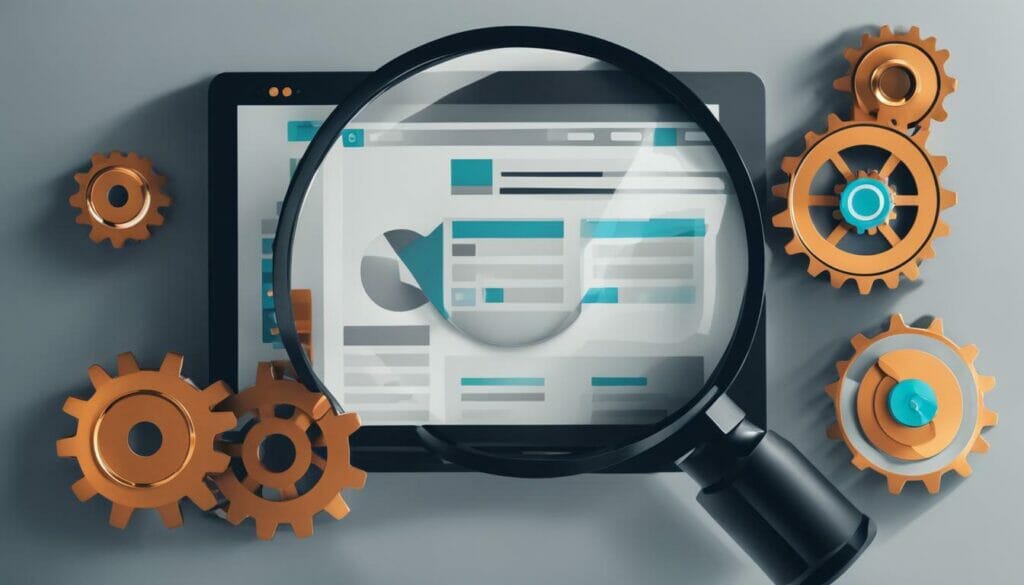
Source: graphene.digital
Ultimately, boosting conversion rates through website design is a holistic process. It’s about understanding your audience, crafting a seamless user experience, and presenting your message in a compelling and persuasive way. By focusing on UX, visual appeal, compelling content, and technical optimization, you can create a website that not only attracts visitors but also converts them into loyal customers.
Remember, it’s an ongoing process of refinement and improvement – constantly testing, analyzing, and iterating to achieve optimal results. So, are you ready to transform your website into a conversion machine?
FAQ Section: How Can Great Website Design Improve Conversion Rates
What is A/B testing, and how can it help improve my conversion rates?
A/B testing involves creating two versions of a webpage (A and B) with slight variations, like different headlines or button colors. You then show each version to different groups of users and track which performs better in terms of conversions. This data-driven approach allows you to make informed decisions about optimizing your website.
How important is website speed for conversions?
Website speed is crucial. Slow loading times lead to high bounce rates (users leaving your site quickly). Fast loading speeds improve user experience, keeping visitors engaged and increasing the likelihood of conversion.
What are some examples of effective calls to action (CTAs)?
Effective CTAs are clear, concise, and action-oriented. Examples include “Shop Now,” “Learn More,” “Get a Free Quote,” or “Download Now.” They should stand out visually and be strategically placed on your website.
